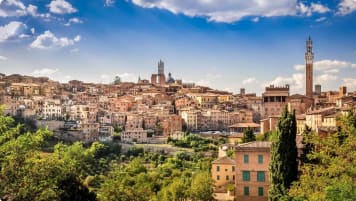The Rise of Venice
Venice, Italy a traders paradise for pilgrims and merchants, now a tourists mecca. A deep history of people, culture and intrigue awaits the visitor to Venice from the St Mark's sq to the Doges palace, carnivals and the Gondolas. An Antipodean travel company serving World Travellers since 1983 with small group educational tours for senior couples and mature solo travellers.
20 May 23 · 12 mins read
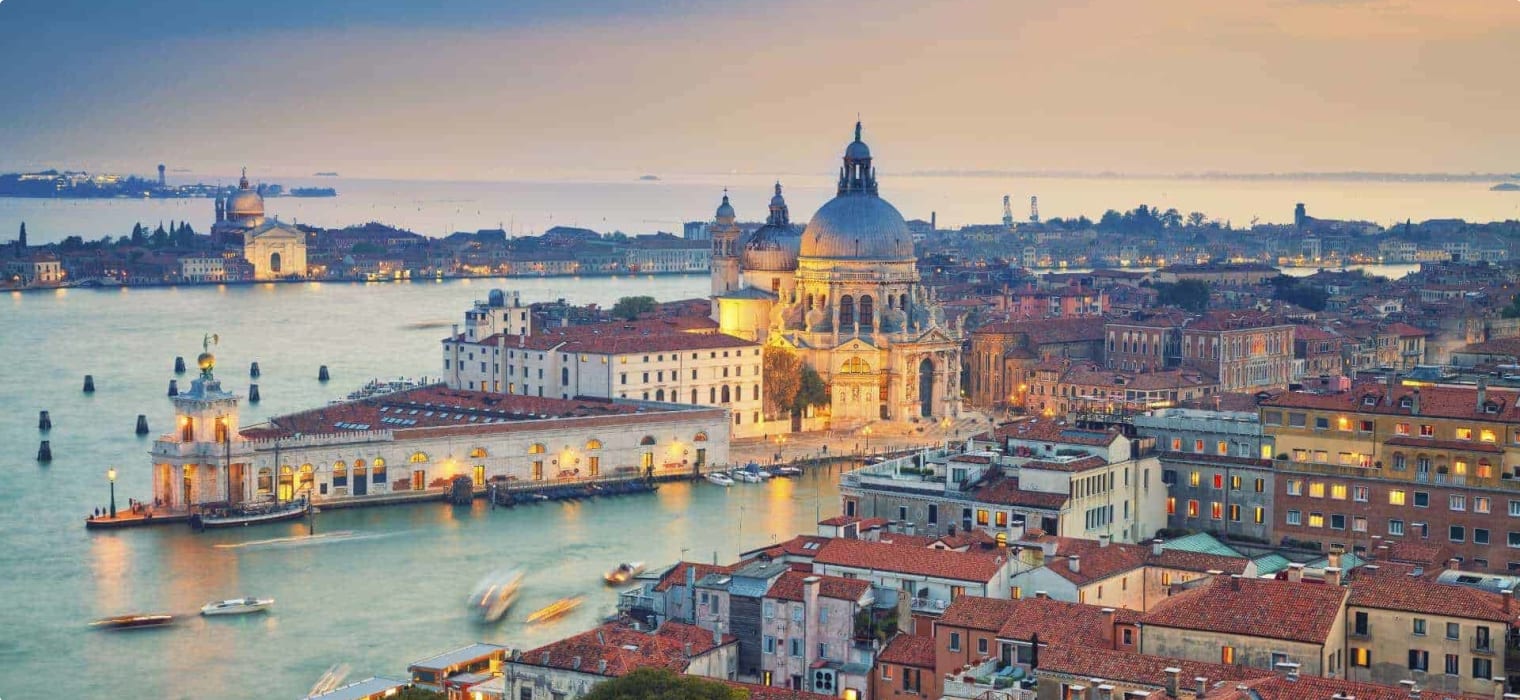
The Birth of Venice Italy
The floating city of Venice has a long history dating from the sixth century CE, when it emerged following the fall of the Western Roman Empire. As successive waves of Germanic and Hunnic invasions tore through northern Italy, they sparked a refugee crisis, with many fleeing to the safety of the Venice lagoon. Over the decades the people would coalesce, forming the first permanent settlement by the year 600.
Due to its unique geography, Venice was able to use water-based defences to resist further attempts of invasion over the next two hundred years, even as the rest of the region fell to the Lombards and then the Franks. The city thus survived on its own on the periphery of the Byzantine Empire. Due to its isolation, Venice would become increasingly autonomous over the years as it would go on to become the major power of the Adriatic area during the early years of the Italian Renaissance.
This article explores the rise of Venice in the early middle ages, from the fall of the Western Roman Empire until the mid-9th century. It is intended as background reading for Odyssey Traveller’s tours of Venice. Much of the information used in this article is sourced from David Aboulafia’s The Great Sea: A Human History of the Mediterranean and Thomas F. Madden’s Venice: A New History.
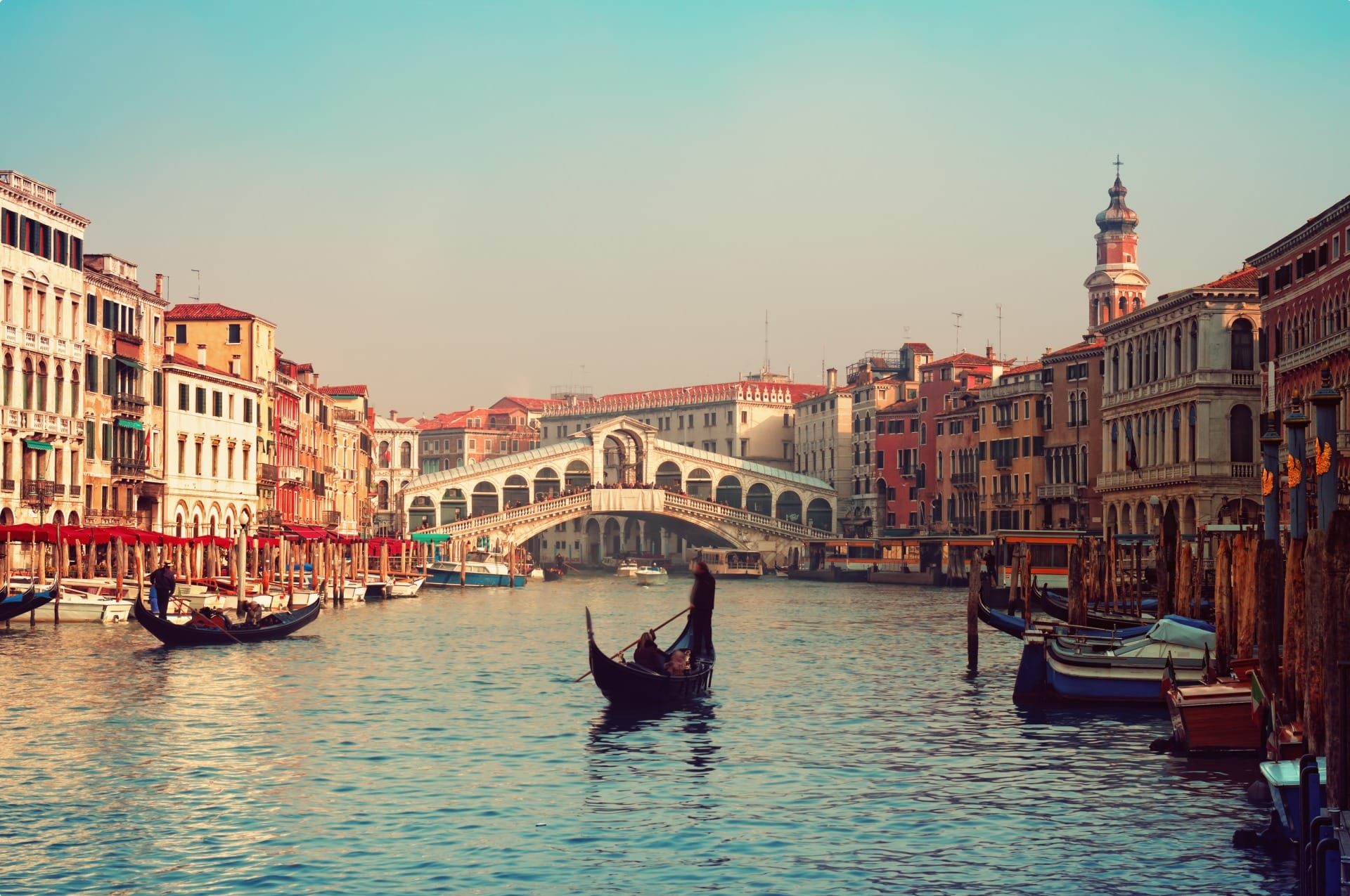
Barbarian Invasions
The earliest history of Venice can be traced back to the Roman era, with the local Veneti people of the Veneto region (along the coast of what is now Northeast Italy) considered Roman citizens from 49 BCE. During this time, the few people who lived on the Venetian lagoon, which stretched from Chioggia to Grado, were fishermen who kept temporary houses on a few islands.
As a people between Constantinople in the East and Rome in the West, the Veneti depended on the empire. However, the Roman economy began to experience a steep decline from the third century CE, with the empire plagued by political corruption and civil war. Then, as the empire was crumbling from within, it was attacked from without, with waves of barbarian invasions sweeping across the western half of its domain in the fourth and fifth centuries.
The Italian lands at the northern end of the Adriatic Sea were hit particularly hard. In 402, the first of the major barbarian invaders, the Goths, descended on the Veneto region. This sparked a refugee crisis, with the frightened people of the cities along Veneto’s roads fleeing to the safety of the nearby lagoon. Under their chieftain Alaric, the Goths then pressed on to conquer and sack Rome itself in 410.
Eventually, the Goths departed the region and the lagoon refugees were able to return to their ruined cities to begin rebuilding. Some, however, with little to return to on the mainland, decided to remain on the islands. Here they had started a new life, putting considerable effort into building wooden houses, digging fishing holes, and learning the natural channels. Staying here offered some consolidation for their losses on the mainland.
But, most importantly, the islands offered safety against the potent force of the Goths who continued to threaten the Western Empire. Over the rest of the fifth century, instability persisted in the region, with both Roman and barbarian armies continuing to march long the Roman roads, brining more carnage and more flames. The inhabitants in turn continued to flee to the islands, with more and more choosing to remain in the safety of the water than return to the ever-present danger at home.
Atilla the Hun’s 452 invasion of the provincial capital city of Aquileia, on the mainland coast of the lagoon, was particularly devastating. With their city destroyed, a significant number of refugees fled to the islands and towns across the length of the lagoon, where many of them would remain.
The people of the lagoon soon formed a loose federation, electing three tribunes to act as their government in 466. The tribunes were Roman officials, with governing authority answerable to the emperor in Rome. In 476, however, the barbarian Odoacer overthrew the child emperor Romulus Augustulus and became King of Italy, marking the end of the Western Roman Empire.
In 488, a new Gothic leader, Theodoric, then marched into Italy with his armies under the order of the Eastern Roman Emperor Zeno, who wished to overthrow Odoacer. This was achieved in 493, with Theodoric going on to reign over Italy until 526. This was a golden age for Italy, with Rome rebuilt and order restored. No such rebuilding occurred in the lagoon, but it did mean closer communications and trade with Rome. During this time, the early Venetians were able to eke out a life as fishermen and traders in salt.
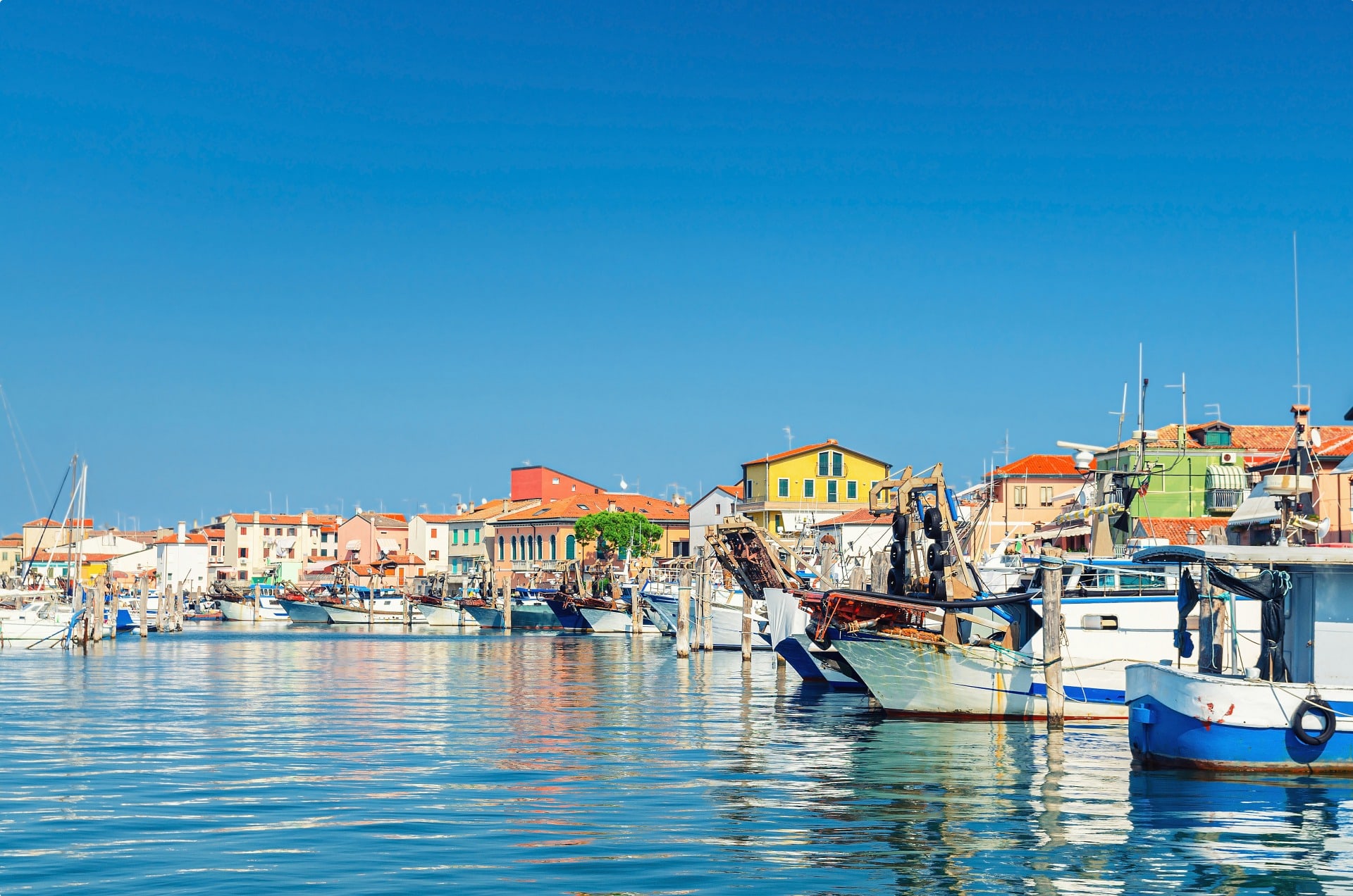
Under the Byzantine Empire
Italy’s golden age ended in 526 after the death of Theodoric, with relations between the native Romans and their barbarian masters degenerating rapidly. In 533, the Eastern Roman Emperor Justinian I decided to roll back the Germanic invasions and restore the Roman Empire in the West. Two years later, his general, Belisarius, landed in Italy, beginning the long and bitter Gothic War (535-54).
The early Venetians sprang to support Constantinople, the men of the lagoon dutifully arming themselves, boarding their war vessels, and assisting Belisarius with the conquest of Ravenna in 539. In gratitude for their assistance, the emperor granted Venetian sailors the right to trade in ports across the Roman Empire.
By 555 the Romans had finally won the war in Italy. However, Rome, having changed hands several times, was now in ruins. Unable to restore the city to its former glory, Justinian simply made Italy a province under the authority of an “exarch”, or governor, based in Ravenna. The new Exarch of Ravenna had jurisdiction over the Venetian lagoon, and thereby over the tribunes there.
Historians refer to the empire from this period forward as the Byzantine Empire. The early Venetians, however, considered the emperor in Constantinople not as Byzantine, but Roman. And it is such that they considered themselves. Madden writes, “Throughout their histories, the underlying foundation that bound Venice and Constantinople together was that shared Roman heritage.”
When Justinian died in 565, it seemed that the Roman Empire was on its way back. This, however, was not to be. Soon, a new Germanic barbarian tribe, the Lombards, were on the move, looking for a new home. Italy, where Byzantine forces were weakened, seemed perfect.
It would take nearly two centuries for the Lombards to expel the Byzantines from their provincial capital at Ravenna. During this period, the Exarchate of Ravenna continued to administer the Venetian lagoon, along with a part of central Italy. However, much else of Italy was quickly conquered by the Lombards.
They began their incursions into northern Italy in 568, and soon they had captured all the main cities in the Veneto and extended their conquests westward to Milan. Having come to stay, they took over the cities, claimed the countryside, and even established a new capital at Pavia. Madden writes, “The Lombard invasions so devastated the Veneto region that they are literally responsible for a second founding of Venice.”
Indeed, as a result of the invasions, new waves of refugees from North-eastern Italy fled to the islands of the Venetian lagoon. City by city, the mainlanders took up their journey. This time, however, it was not possible to simply wait out the conquest and return home afterwards. The Lombards were not leaving, and so the flight to the lagoon would be permanent. Over the decades, the scattered islands’ peoples would coalesce, with evidence for a permanent settlement from the year 600.
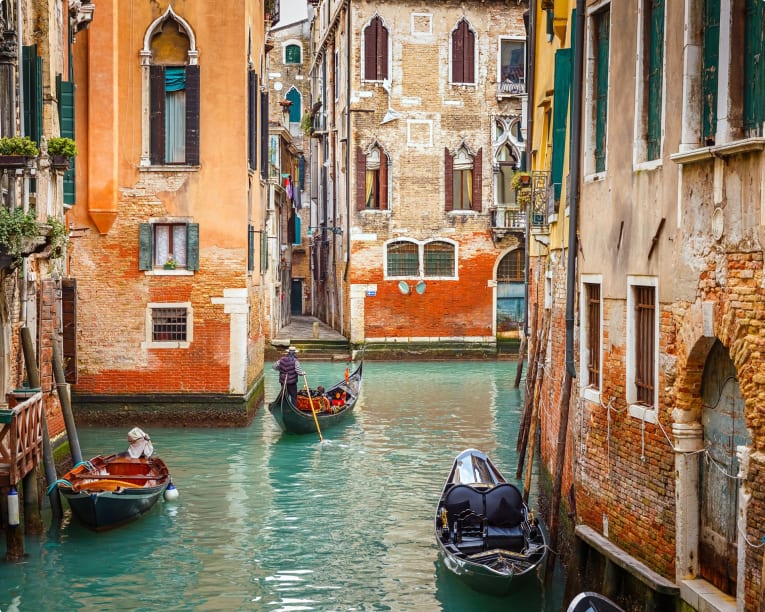
The First Doges of Venice
Although the Venetian lagoon was a busy place from the turn of the seventh century, the city of Venice was still yet to be founded. Rather, the largest settlement was Torcello, home to perhaps as many as five thousand people. This was accompanied by many other towns and villages, linked by a few large vessels and swarms of flat-bottomed boats.
More people in the lagoon meant more economic activity and, therefore, more to fight about. The Byzantine provincial government in Ravenna appointed additional tribunes for the Venetians to oversee their far-flung settlements, but that did little to stem the growing disagreements. Violence was becoming a significant problem.
Eventually, it was suggested that the scattered lagoon dwellers elect a leader to help bring peace and unity to the region. So, in 727, the people of the lagoon elected Orso Ipato – the first of 118 doges that would govern the Duchy of Venetia. The Venetian Doge, however, was no duke (as the same title came to be known elsewhere in Europe). He presided over the tribunes, but he did not replace them; and Venice still remained under the Byzantine Empire, with subsequent doges appointed directly from the provincial capital in Ravenna. Nevertheless, as Madden writes, “the doge’s office was evidence of the growing realization that the scattered island communities of the lagoon were slowly becoming one entity.”
Over the following decades, this entity would become increasingly autonomous. This was due to its geographical isolation, far from Constantinople and connected to Ravenna only by sea routes. With the Byzantine Empire busy in the east yielding off invasions from first the Persians and then Arab armies professing the new religion of Islam, it had little time to bother with the merchants and fishermen of the Venetian lagoon.
Venice became fully independent from Byzantium from around 751, when the Lombards finally conquered Ravenna and ended the Byzantine presence in the region. Although official independence was never formally announced, it was universally acknowledged. From then on, the Venetian Doge would be appointed by the merchant families who had emerged in the town. Internal political strife continued, as various settlements and pro- and anti-Byzantine factions vied for supremacy. These were lawless times and leadership was an unenviable duty, with various doges either killed in battle or usurped violently.
As land was scarce in the lagoon, wealth was based not on a landed aristocracy but on entrepreneurial skill. Indeed, during the reign of Domenico Monegario (756–764), Venice had transformed from a fishermen’s town to a pot of trade and centre of merchants. Significant trading occurred in salt, fish, and timber, but the real profits were to be found in the Venetians’ role as entrepreneurs in the limited luxury trade between East and West. With other ports in decline, there were few competitors, allowing Venice to become main port through which contact with the eastern Mediterranean was maintained.
The volume of luxury imports was small but the profits were high, because of the risks and because of the rarity of the articles the Venetians carried: silks, jewels, gold artefacts, and saints’ relics. They sold these goods on to Lombard princes, Frankish kings, and luxury-loving bishops, mainly in the Po Valley and neighbouring area. Venice also established itself a thriving slave trade, buying in Italy, among other places, and selling to the Moors in Northern Africa.
The Venetian economic system had a significant impact on the type of power the doges could operate. Madden writes, “Based on liquid rather than landed wealth, [the economic system] created shifting constituencies of power that tended to reject privilege and insist on equality…. [The people] prized freedom and distrusted concentrated power.” Although the doges had significant powers, early doges were nonetheless beholden to the Venetian people, who resisted the concept of a ducal dynasty, even though many doges tried unsuccessfully to establish one.
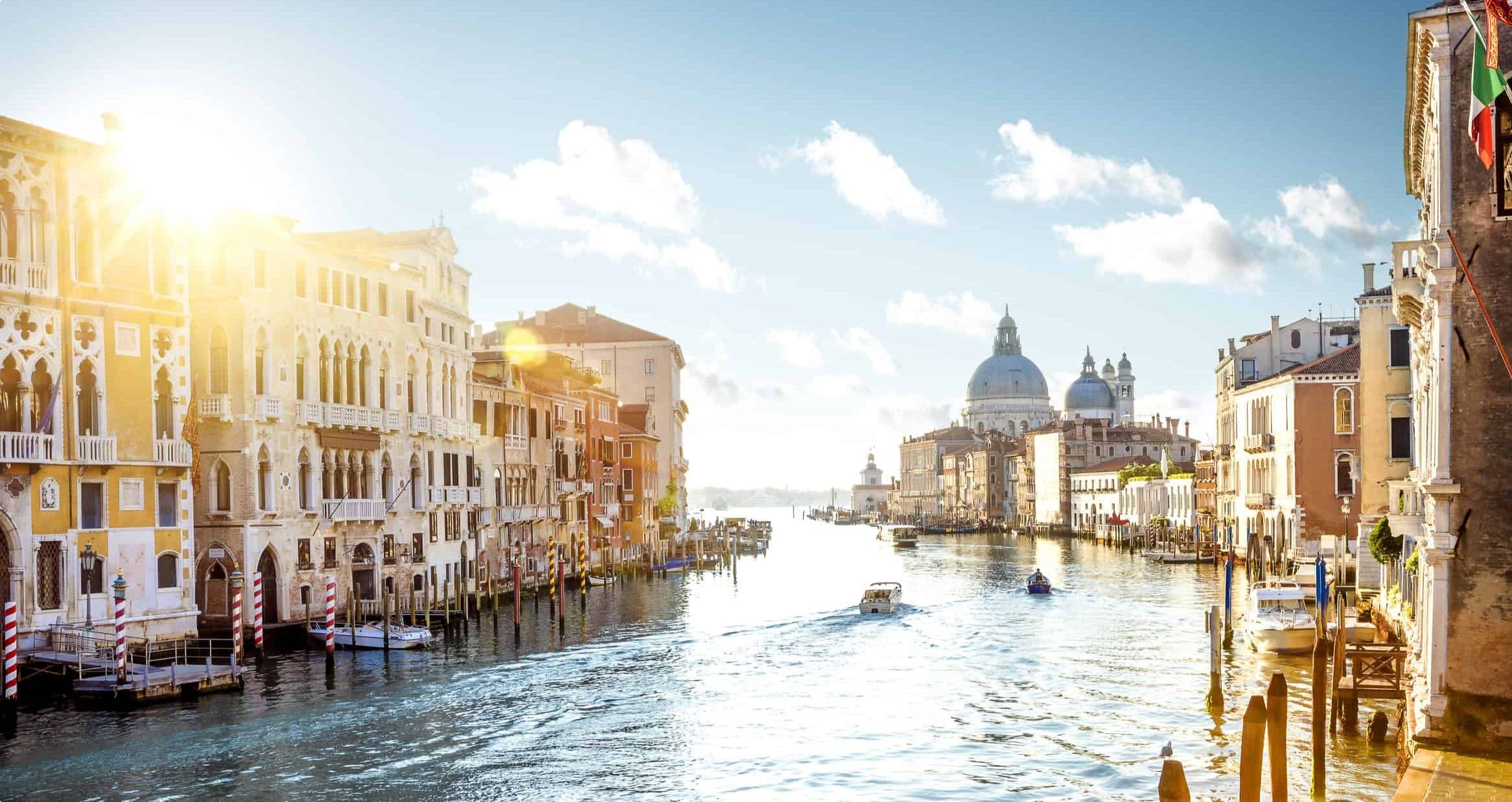
Resisting the Franks
In the early 800s, the Venetians would face a new challenge from another Germanic tribe, the Franks. Fierce in battle, the Franks had already conquered and settled Gaul, or what is today France. After Ravenna finally fell to the Lombards in 751, Pope Zachary in Rome had turned them for help as fellow Catholics. With Constantinople distant and distracted, the pope was otherwise practically defenceless against the Lombards who now dominated the Italian mainland.
In return for the pope’s support of his bid for the Frankish crown, Pepin the Short led his armies across the Alps and into Italy. Here he neutralized the Lombard threat, securing several cities, including Rome and the lands around it, which he gave to the popes. This they would henceforth rule as their own kingdom, known as the Papal States.
Although Pepin’s achievements were impressive, his reign is largely overshadowed by his more famous son, Charlemagne. He was responsible for uniting a mighty kingdom by power of the sword, which included what is today France, Germany, and northern Italy, where he thoroughly defeated the Lombards. Pope Leo III gave Charlemagne his blessing on Christmas day 800 during a visit to Rome, placing a crown on his head and proclaiming him “emperor of the Romans”. The real Roman government in Constantinople, however, naturally rejected this designation.
This created a dilemma for the inhabitants of the Venetian lagoon, who still considered themselves to be citizens of the Roman Empire. A powerful minority of Venetians urged closer ties with Charlemagne and the Franks, whose power was truly impressive, and whose friendship could provide mighty profits. Most Venetians, however, including the doge and his son, opposed turning away from Venice’s traditional allegiance to Constantinople. Madden writes, “The economic, cultural, and emotional ties between Venice and Constantinople could not so easily be sundered.”
In 804, however, the pro-Frankish faction was able to seize power under doge Obelerio degli Antenori, bringing Venice into the Orbit of the Frankish Empire. By 809, Obelerio’s political position had become tenuous. Fearing a coup such as the one he had himself orchestrated against his predecessor, he called in Charlemagne’s son Pepin, King of Italy, to occupy the Venetian lagoon in his defence.
Despite the immense power of the Franks, however, the city’s geography successfully held off Pepin. As the king laid siege to the city, the Venetians retreated to the safety to the marshy archipelago of islands around Rialto. This was the least inhabitable part of the lagoon, but it was the least penetrable, protected by a long lido from sea invaders, but far enough from the coastline to deter land invaders. The six-month siege proved costly to the Franks, with Pepin’s army bogged down in the stifling heat of the lagoon and ravaged by the diseases of the local swamps, until they were eventually forced to withdraw. A few months later Pepin himself died from the lagoon’s fevers.
Although it was never his intention, Pepin would unite the Venetian people. Madden writes, “In an attempt to destroy the Venetians, Pepin had managed to fuse them into one people, determined to protect their shared home. ” Faced with his powerful invasion, the Venetians put aside their differences and factions disappeared in order to fight the common foe.
By repelling the besiegers, Venice firmly asserted its independence. A Franco-Byzantine treaty of 814 confirmed that the Venetian lagoon was not part of the Frankish empire. Rather it was recognized as a Byzantine territory; but it was one that was not dependent on Constantinople. By 840-41 the doge of Venice was negotiating international agreements in his own name. From here on the city flourished as an independent centre of trade between the east and the west.
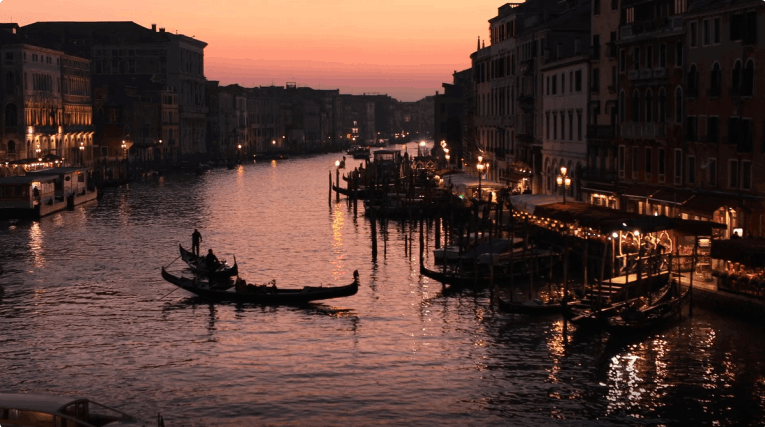
St Mark, Patron Saint of Venice
In 828, an object was brought to Venice that entirely changed its character and its status. That object was the body of the long-dead St Mark the Evangelist – the disciple of Jesus and author of the Gospel of Mark. The story of how the relics of St Mark came to rest in Venice is an interesting one, and one that has remained of supreme importance to Venetians for the centuries since.
According to legend, two Venetian merchants in Alexandria obtained the relics form the priests of Saint Mark and smuggled it out of the city. The priests were looking to protect the relics, fearing that the Muslim authorities, who had recently began persecuting local Christians, might soon steal or damage them. The Venetians offered to safeguard the saint’s remains and return it with them to Venice. At first, the priests were afraid to offend the saint by moving his body out of Alexandria, the city of his bishopric and death, to a strange land. However, the Venetians responded that Venice was not a strange land at all, for St. Mark had been to the lagoon on his way to Aquileia, where he had established the metropolitan see.
This seemed reasonable enough, and so it was decided that the four would steal St Mark’s body and smuggle it into a waiting Venetian ship. The body was taken out of its sarcophagus, unwrapped from its silk shroud, and replaced with another and less eminent saint. It was then hidden in a large basket and covered in raw pork. When Muslim custom officials went to inspect the basket, they shut it with horror and fled the ship. And so it was that St. Mark was smuggled out of Alexandria and sailed to Venice.
St Mark’s body was initially deposited in a chapel next to the Doge’s residence, until a small chapel was built to permanent house the saint. The simple structure, completed in 832, was the first church of San Marco, built on the current site of St Mark’s Basilica.
Madden writes, “In time, the association between St. Mark and the Venetian republic would become so firm as to be inseparable.” It is around the saint that the Venetian national identity would form. Even now, the lion of St Mark is on every banner in the city. Venice has become the Republic of St Mark.
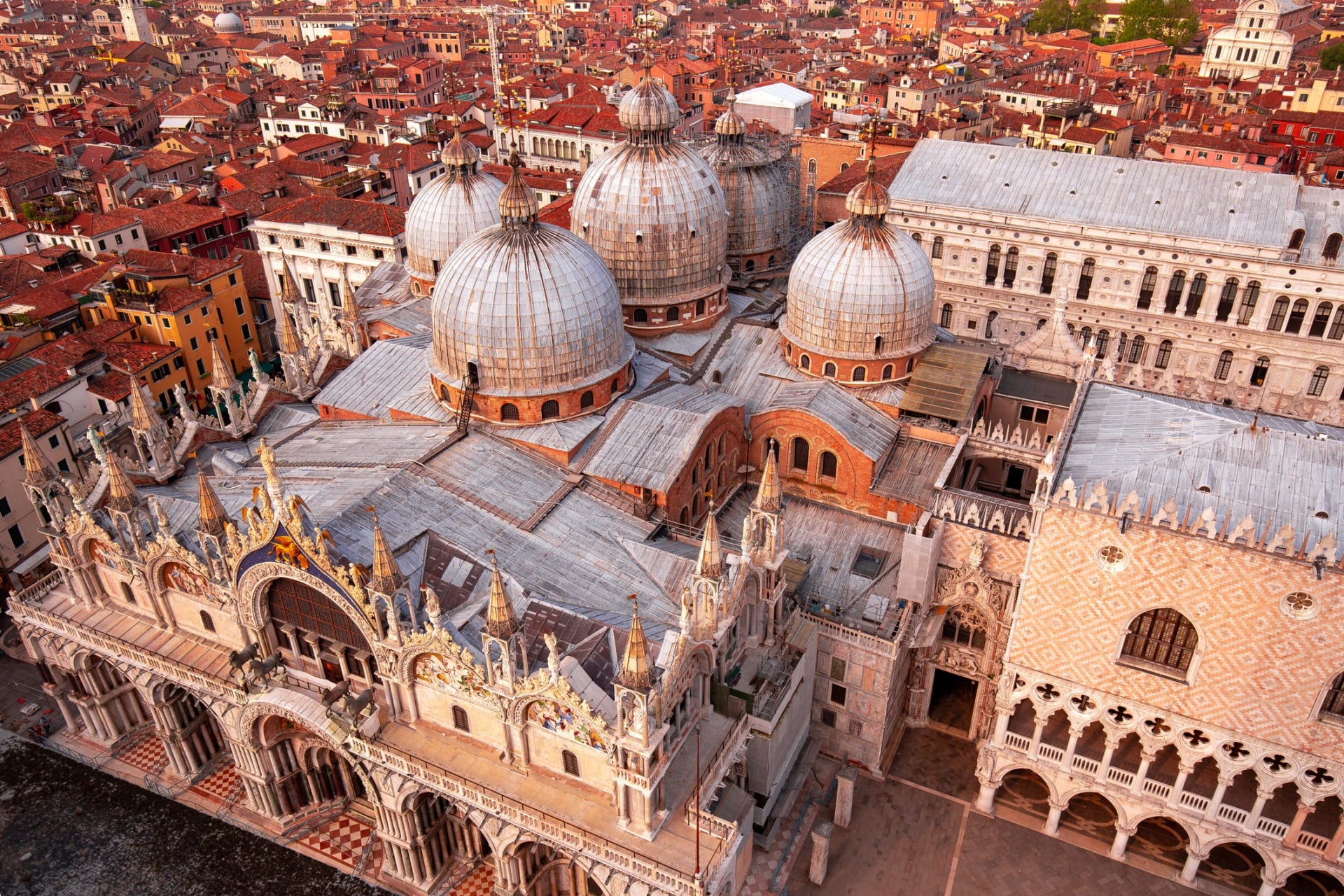
Tour of Venice
Odyssey offers a small group tour of Venice for mature and senior couples or solo traveller(s) and many other Italian destinations. Our local guide offers guided walking tour(s) to marvel at the Doges Palace, a private tour(s) giving the expert guide the chance to take a traveller to places like the Rialto bridge or tourists day trips to the many of the beautiful islands located nearby. The guided Venice tour can be combined with a classic Italy tour visiting remarkable landmarks and magical places with a tour company specialised in Italy small group tours: Southern Italy, Cinque Terre, Amalfi Coast, Tuscany, Lake Como, Sicily, Lake Garda, Lake Maggiore, Milan, Pompeii, Central Italy, sites of Ancient Rome (the “eternal city”) and Vatican city.
Odyssey Traveller has been serving global travellers since 1983 with educational tours of the history, culture, and architecture of our destinations designed for mature and senior travellers. We specialise in offering small group tours partnering with a local tour guide at each destination to provide a relaxed and comfortable pace and atmosphere that sets us apart from larger tour groups. Tours consist of small groups of between 6 and 12 people and are cost inclusive of all entrances, tipping and majority of meals. For more information, click here, and head to this page to make a booking.

Articles about Italy published by Odyssey Traveller
- The Roman Empire
- Who were the Roman Emperors
- Questions About Italy
- Trip Advice for Travellers going to Italy
- 10 Great Books to Read Before You Visit Italy
- as well as more articles on Italy here
External articles to assist you on your visit to Italy
Related Tours
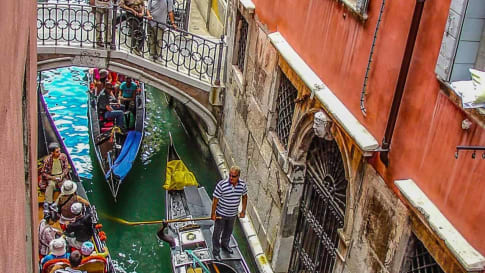
18 days
Sep, AprSmall group tour to Venice and Genoa
Visiting Italy
City pairs and rivalries exist. When spice, gold, steel swords and cloth where major commodities in the Mediterranean then Venice and Genoa fought for market share. Venice offered mercenaries, Genoa, banks. Italian history tour for those interested in joining a small group educational tour for senior couple and mature solo travellers.
From A$10,995 AUD
View Tour
18 days
Aug, SepArt and History of Italy | Small Group Tour for seniors
Visiting Italy
Taken as a whole, Italian Civilization (which includes, of course, the splendid inheritance of Ancient Rome) is absolutely foundational to Western culture. Music, Painting, Sculpture, Architecture, Literature, Philosophy, Law and Politics all derive from Italy or were adapted and transformed through the medium of Italy.
From A$16,695 AUD
View Tour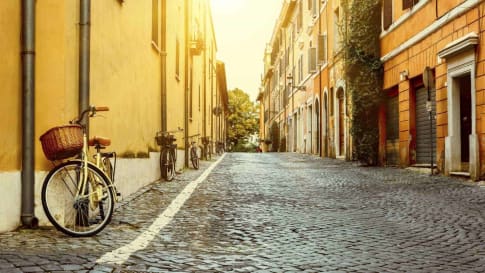
22 days
Sep, Apr, MarHeritage, Culture and History of Italy | Small Group Tours for Seniors
Visiting Italy
Rome, the world’s first superpower, lasted for almost a thousand years. In this small group tour for senior couples and solo travellers we thread our way through the Rome of the Emperors, then through the Italy of the Renaissance, Michelangelo, the Medici, and the Borgia. In the south, we visit the cosmopolitan city of Naples as well as Pompeii and the island retreat of Capri.
From A$13,695 AUD
View Tour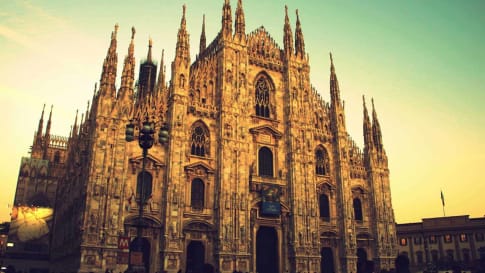
14 days
Sep, MayLakes and Landscapes of Northern Italy | Short Small Group Tour for Seniors
Visiting Italy
Our small group tour begins in the cosmopolitan city of Milan and ventures to 2 of the region's lakes - Garda and Maggiore. Our tour uncovers a wealth of natural beauty, castles, serene waters, snow-capped mountains, and breathtaking scenery.
From A$9,225 AUD
View Tour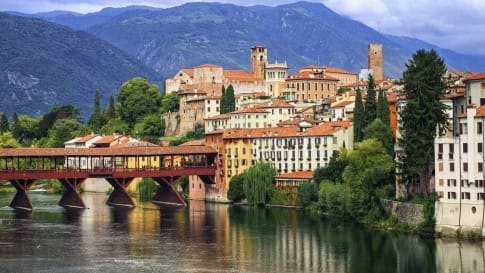
22 days
Oct, AprTour of Northern Italy's Lakes and Alps
Visiting Italy
A European tour to the stunning Lakes Region of Italy. Your travel experience begins in Milan, daily itineraries include two of the region’s lakes - Garda and Maggiore, plus the Roman villa Desenzona and a day in Cinque Terre. Local guides share experience and knowledge with you on this escorted small group tour for couples and solo travelers.
From A$14,895 AUD
View TourRelated Articles
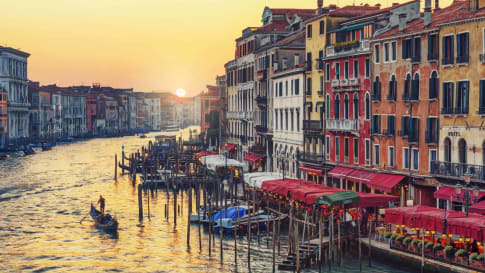
Carnivals of Venice
Article for senior couple and mature solo travellers joining a small group history tour visiting Venice and beyond to Italy, Greece, Turkey the Islands of the Eastern and Western Mediterranean and the Northern shores of Egypt, Tunisia. Learn about the role of Venice as emerging point of trade and navies for hire in the middle ages through to the renaissance.

Gondolas and the Bells of Venice
Venice and the story of gondolas add to the senior couples or mature solo traveller small group tour learning about this merchant city. Europes trading centre close to the Mediterranean was for several centuries the place to trade for spice, woollen garments and silk. The attractions where substantial as was the wealth created and the wars waged across what is today's Italy. This article extends your knowledge of Venice and its merchant history.

Pilgrims and the Merchants in Venice.
Article for senior couple and mature solo travellers joining a small group history tour visiting Venice and beyond to Italy, Greece, Turkey the Islands of the Eastern and Western Mediterranean and the Northern shores of Egypt, Tunisia. Learn about the role of Venice as emerging point of trade and navies for hire in the middle ages through to the renaissance.

Venetian pallozzo
Venice a curiosity, Merchants, pilgrims, gondolas, stories of espionage, the power of maps for trade carnival and the Peggy Guggenheim Museum. The stories fascinate, this article examines the history of the Peggy Guggenheim museum. Read and learn before joining as a senior couple of mature solo traveller a small group educational tour to Venice and Italy.

Venice and its Merchants
An article that takes you on a journey to Venice in the Middle Ages and beyond. The famous merchants of 'La Serenissima' who dominated this medieval powerhouse for hundreds of years. Learn before joining one of the small group tours for mature and senior travellers couples and solo travellers to Venice and many other destinations in Italy.
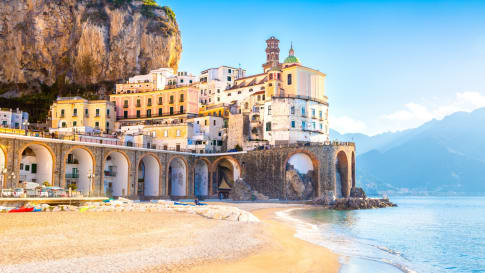
Amalfi, Italy
Italy beyond Rome could be just the Amalfi coast, food, wine, the Mediterranean and Southern Italy. Amalfi was though a powerful trading republic and challenger to Venice and Genoa. Learn more about this historic destination in this article that is part of the history of Italy. An Antipodean travel company serving World Travellers since 1983 with small group educational tours for senior couples and mature solo travellers.
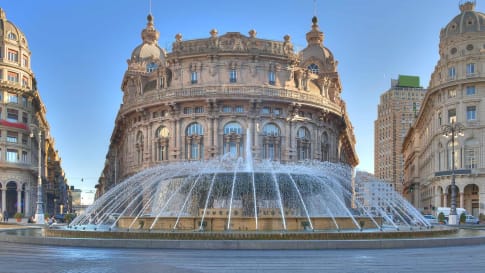
History of Genoa, Rival to Venice
In this article, we will look at the history of Genoa, and its rivalry with Venice that led to several wars fought between the two city-states in the 12th to 14th centuries.
